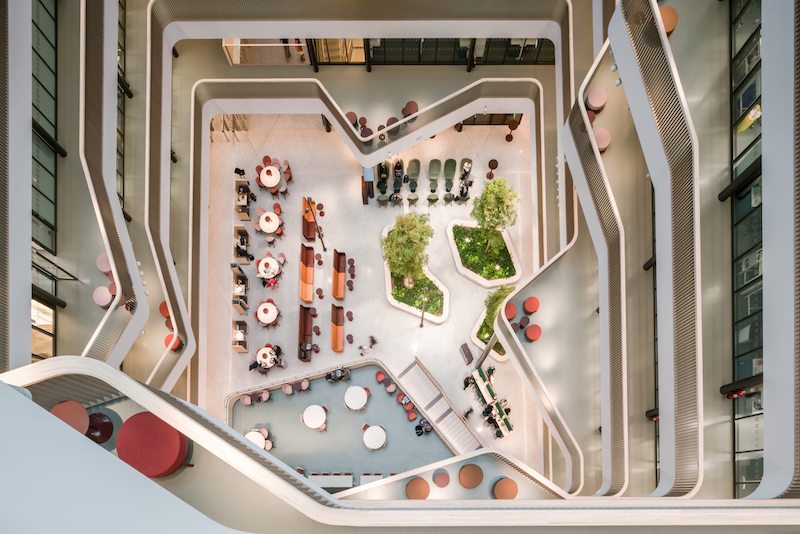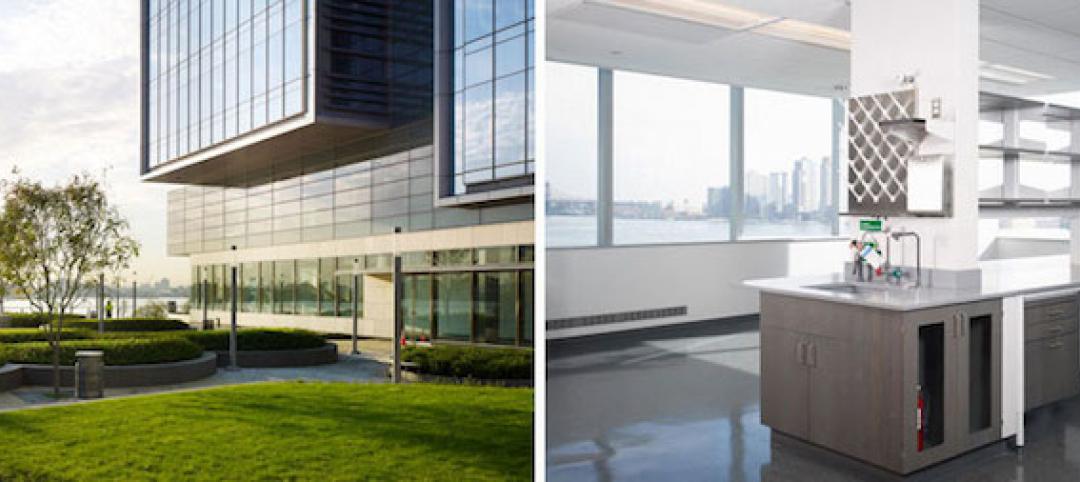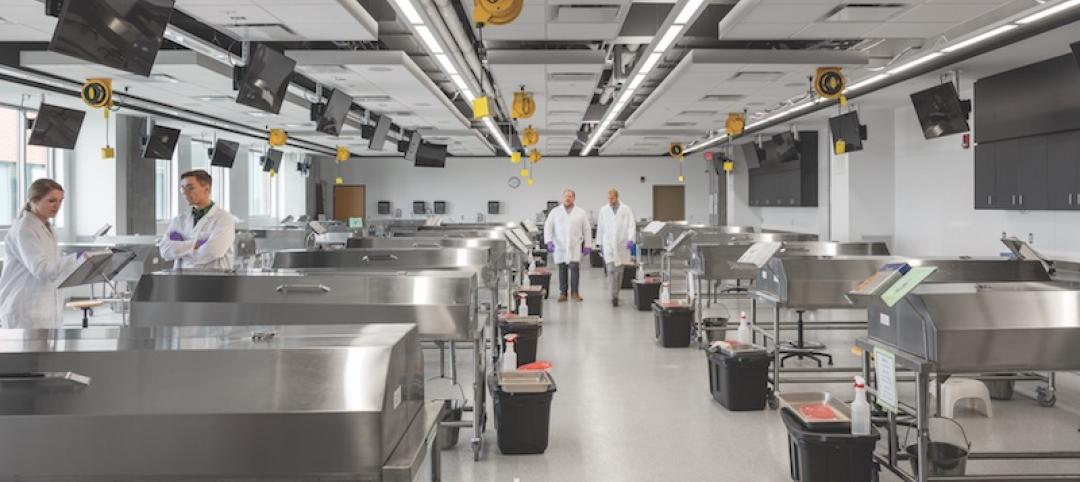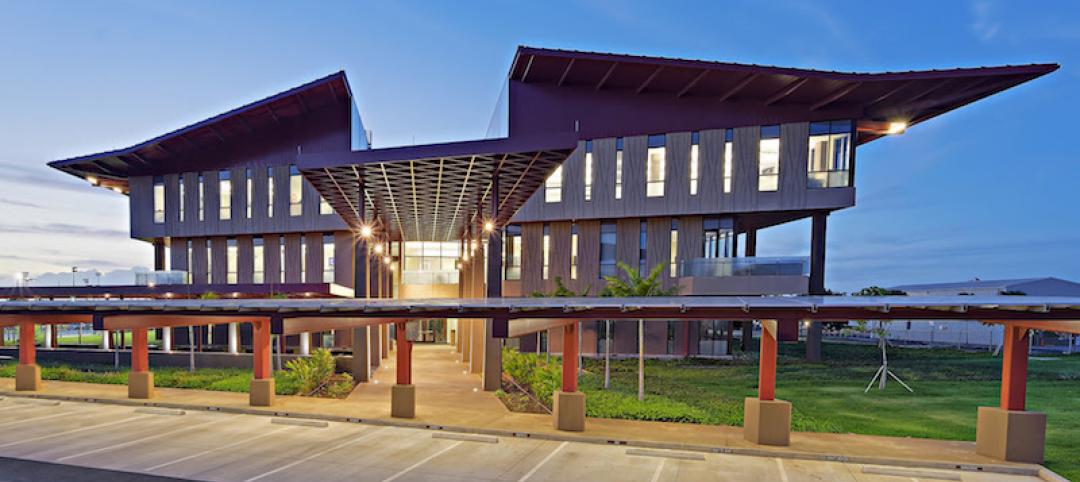Biomedicum, the new laboratory building at the Karolinska Institute in Stockholm, unifies the institute’s research environments under one roof.
The nearly 700,000-sf, 11-story facility will feature flexible laboratory and office space meant to be a catalyst for collaboration between the various research and study environments. It comprises four connected buildings with laboratories built around an eight-story high atrium wrapped in a transparent double-shell façade.
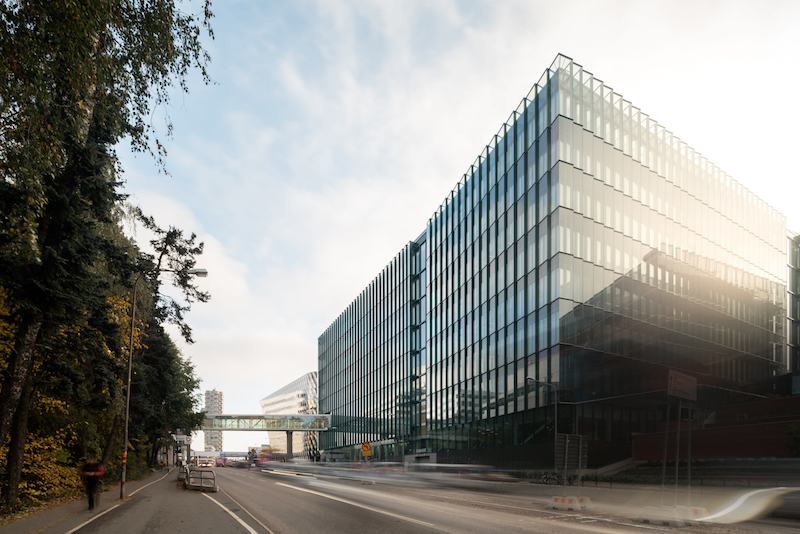 Photo: Mark Hadden.
Photo: Mark Hadden.
The building, located within the campus park, also brings the park inside its walls with a glass-covered green atrium. The atrium roof is a suspended ceiling with large dome-shaped lanterns that let in daylight. Above is a fully glazed roof that is easy to maintain and can be reached from a suspended ceiling.
See Also: Former grocery store becomes a cancer care center in New Jersey
The transparent ground floor offers access to the atrium, a cafe, conference rooms, and a public exhibition space. The ground floor also forms new connections through the park to open up the Karolinska Institute towards both the city and the planned university hospital.
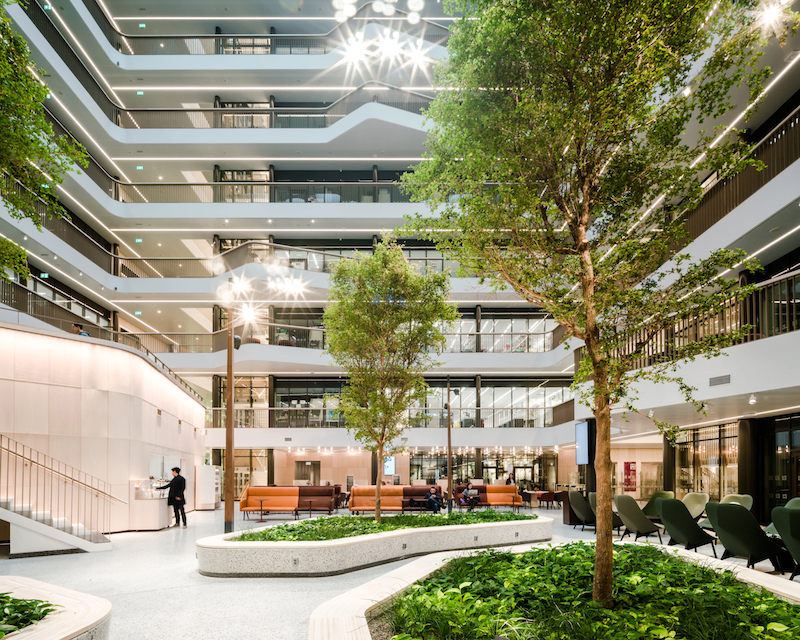 Photo: Mark Hadden.
Photo: Mark Hadden.
Biomedicum accommodates 1,600 researchers and staff and house the following departments:
– The Department of Cell and Molecular Biology
– The Department of Physiology and Pharmacology
– The Department of Microbiology, Tumor and Cell Biology
– The Department of Medical Biochemistry and Biophysics
– The Department of Neuroscience
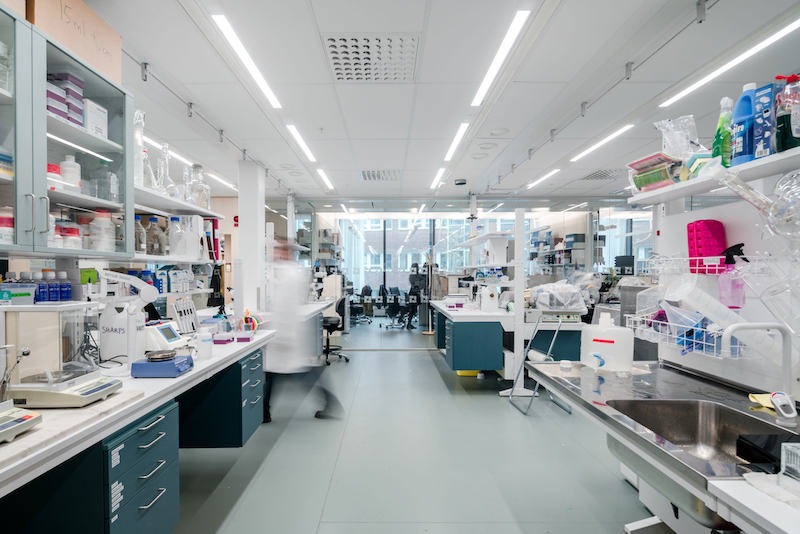 Photo: Mark Hadden.
Photo: Mark Hadden.
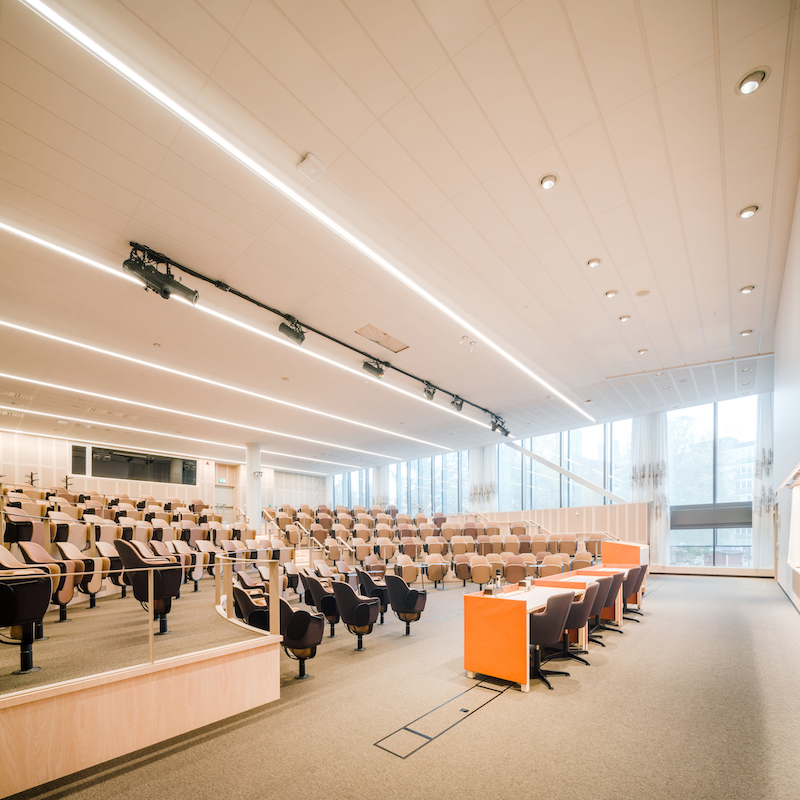 Photo: Mark Hadden.
Photo: Mark Hadden.
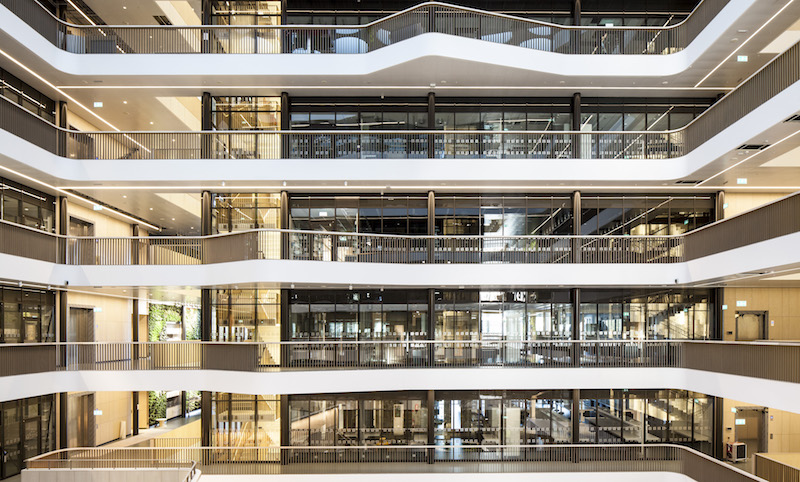 Photo: Nikolaj Jakobsen.
Photo: Nikolaj Jakobsen.
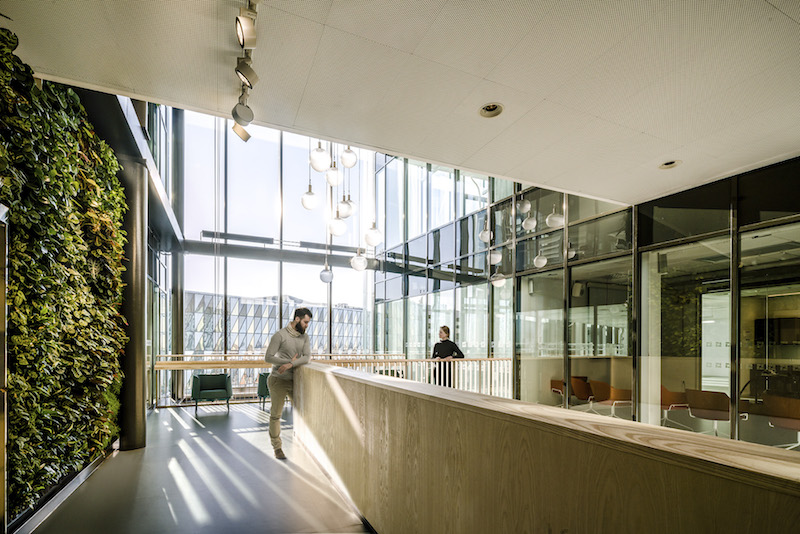 Photo: Mark Hadden.
Photo: Mark Hadden.
Related Stories
Laboratories | Sep 12, 2017
New York City is positioning itself as a life sciences hub
A new Transwestern report highlights favorable market and regulatory changes.
Laboratories | Aug 3, 2017
Today’s university lab building by the numbers
A three-month study of science facilities conducted by Shepley Bulfinch reveals key findings related to space allocation, size, and cost.
Laboratories | Jul 18, 2017
Pfizer breaks ground on new R&D campus in St. Louis suburb
The facility will consolidate the company’s local workforce, and provide flexible work and research spaces.
Building Team Awards | Jun 12, 2017
The right prescription: University of North Dakota School of Medicine & Health Sciences
Silver Award: North Dakota builds a new medical/health sciences school to train and retain more physicians.
Laboratories | Apr 13, 2017
How to design transformative scientific spaces? Put people first
While most labs are designed to achieve that basic functionality, a transformational lab environment prioritizes a science organization’s most valuable assets: its people.
Laboratories | Sep 26, 2016
Construction has finished on the world’s largest forensic anthropology lab, designed by SmithGroupJJR
The lab’s main purpose will be to help in the investigation, recovery, and accounting of Americans lost in past wars.
Laboratories | Aug 8, 2016
The lab of the future: smaller, flexible, tech-enabled, business focused
A new CBRE report emphasizes the importance of collaboration and standardization in lab design.
Laboratories | Jun 16, 2016
How HOK achieved design consensus for London's Francis Crick Institute
The 980,000-sf, $931 million facility is the result of a unique financing mechanism that brought together three of the U.K.’s heaviest funders of biomedical research—the Medical Research Council, Cancer Research UK, and the Wellcome Trust—and three leading universities—University College London, Imperial College London, and King’s College London.


